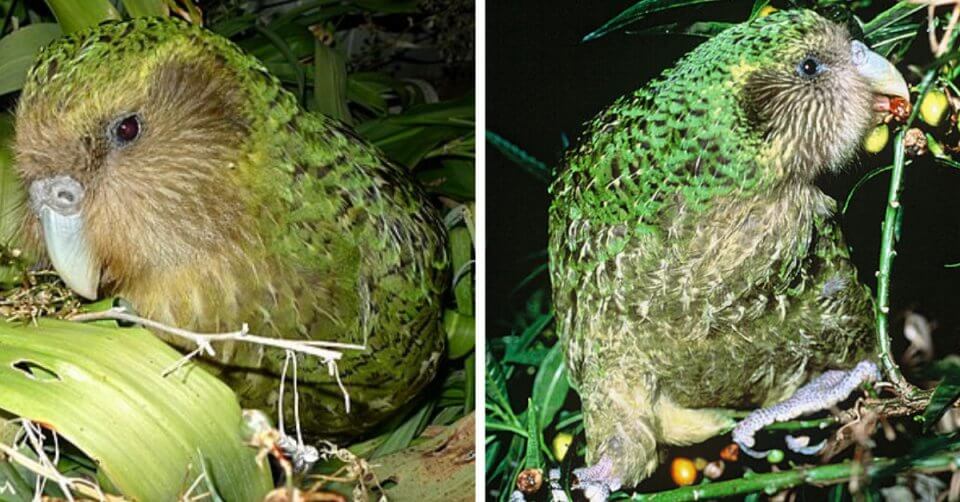BEING THE WORLD’S HEAVIEST PARROT, IT IS ALSO THE WORLD’S ONLY FLIGHTLESS PARROT.
When you combine these two facts with the fact it is also a nocturnal, lek-breeding parrot, it becomes somewhat of an oddity!
MEET THE KAKAPO

Photo Courtesy of docnz / CC BY 2.0
The Kakapo, (Strigops habroptilus), is New Zealand’s largest native parrot. It is flightless, nocturnal, and completely solitary. With only 210 individual birds left, the species low point came in the mid-1990s when there were only 50 birds left after heavy predation mainly due to introduced predators. An intensive conservation effort has brought the species back from the brink of extinction.

Photo Courtesy of docnz / CC BY 2.0
Kakapo are covered in finely blotched yellow-green to emerald green plumage, more yellow below on the belly.

Photo Courtesy of Kimberley Collins / CC BY 2.0
Solitary birds, Kakapo forage on the ground feeding on leaves, buds, flowers, fern fronds, bark, roots, rhizomes, bulbs, fruit, and seeds. They then climb trees at night to roost during the day.

Photo Courtesy of docnz / CC BY 2.0
The breeding season occurs during summer and autumn, after a good fruiting season. Males gather in lek-breeding “arenas,” a series of bowls where they give deep, booming calls to attract females. Sounding something akin to a distant short sonic boom, the sound can carry up to several kilometers.

Photo Courtesy of jidanchaomian / CC BY 2.0
Nests are built on or beneath the ground or under dense vegetation. The female of the species lays 1 to 4 eggs on the ground, which she repeatedly turns over during the incubation period.

Photo Courtesy of Mike Bodie / docnz / CC BY 2.0
Kakapo is still under huge threat from predation from cats, and stoats and their eggs and chicks can be killed by rats. Thanks to a huge conservation effort, their future looks much brighter.

Photo Courtesy of Mike Bodie / docnz / CC BY 2.0
WATCH AND LISTEN TO THE KAKAPO RIGHT HERE BELOW:
A Bird More Likely To Be Heard Rather Than Seen, Despite Their Vibrant Glossy Violet Coats!
Please SHARE this article with all your bird-loving friends and family.
Source: Onebigbirdcage

